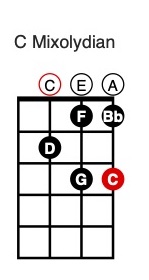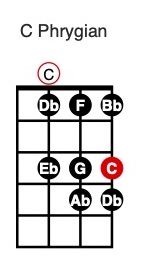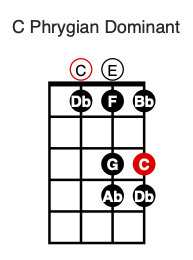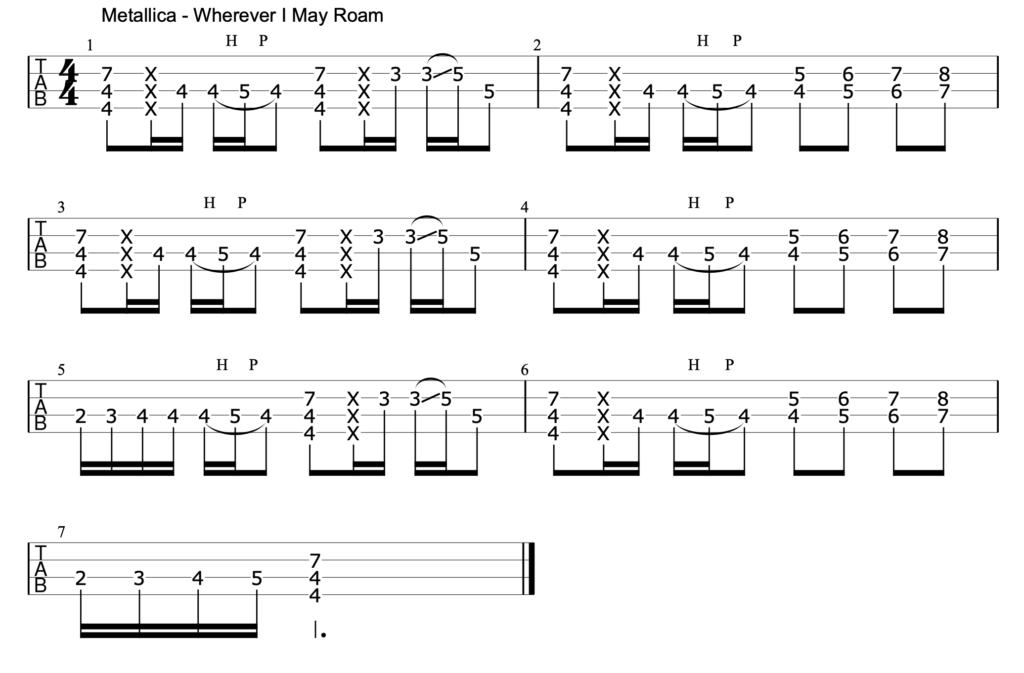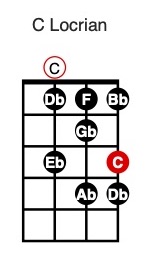I’m sure I’m not the only one who often feels like they’re trotting out the same licks and scales all the time. When I feel like that, I like to dig out a new move (or an old move I’ve forgotten about) and experiment with. One place to find these ideas is in modes.
There’s a whole world of theory to explore with modes and I’m going to talk about almost none of it. The intention here is to pull out a few ideas to liven up our playing. If it whets your appetite for more, don’t be intimidated by the outlandish names. Modes aren’t that hard to get your head around.
Mixolydian Mode
It’s no secret that the lamest note in the major scale is the major 7 note. The Mixolydian mode fixes this by lowering the major 7 to a minor 7. In the key of C, that means going from a B to a Bb. Making the Mixolydian mode look like this:
This cools off the cheery sound of the major scale and makes it sound more confident and strident.
For example: The Verve – Bittersweet Symphony
The confident, strident sound of the Mixolydian mode makes it perfect for this Verve song (sampled from a Rolling Stones song).
Phrygian Mode
Like Mixolydian, the Phrygian mode changes just one note of a familiar scale to create something more interesting. It is the same as the natural minor scale, but changes the major second to a minor second. In the key of C, that’s a change from D to Db.
That change makes the scale feel darker and more mysterious. Which explains why the Phrygian mode is common in metal music.
Phrygian also has a distinct flamenco feel to it. If you want to lean even further into the flamenco sound, you can use the Phrygian dominant scale. This moves from a minor third to a major third. In C, that’s moving from an Eb to E to create this:
It’s a fun scale to noodle around with. I recommend having a go.
For example: Metallica – Wherever I May Roam
Whoever created the rumour that Metallica were copyrighting going from E to F knew a thing or two. E to F is the minor second move that is characteristic of the Phrygian mode in the key of E. A mode Metallica have used often. For example, this Phrygian heavy riff from Wherever I May Roam which hammers-on and off from E to F many times.
Locrian Mode
Everyone hates the Locrian mode, thinks it smells and finds it hard to work with. Which is why I relate to it so much.
The Locrian is only one note away from the Phrygian mode. It has a flattened fifth. In C, that means a Gb instead of a G:
It’s the only mode that has this feature and it’s what makes it difficult to use. Without that fifth, a song will never feel settled. But I do find it comes in useful in a couple of situations. Firstly, it’s useful to slip into when you want to create a feeling of being unmoored and adrift. Then when you move back to something more settled, it’ll be all the more satisfying.
Secondly, it can be used to create loops that feel like they don’t have a start or an end. Such as…
For example: The Strokes – Juicebox
The Locrian is so rare in pop music that everyone gives the same two examples: Juicebox by The Strokes and Army of Me by Bjork. Both use it in the same way.
Because the Locrian mode never sounds settled, you can use it to create endlessly looping riffs. Both songs have looping Locrian basslines that add an unsteady undercurrent to everything that’s happening above them.
